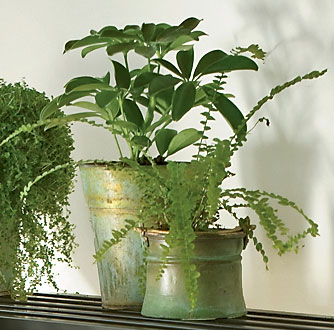Wash Your Houseplants to Prevent Pest Problems

When houseplants spend the summer outdoors, they often come inside with a case of pests. To prevent problems, consider these tips:
- Dust and grime on the leaves of your houseplants doesn't just look bad; it can also be harmful to the health of the plant. Dust filters sunlight before it reaches the plant, decreasing the amount of photosynthesis the plant can undertake. It also stresses the plant by inhibiting transpiration. Dust and grime can also attract and harbor spider mites and other insect pests.
- Wash smooth-leaved houseplants with a moist, soft cloth. For plants with many small leaves, spray them with lukewarm water or tip the plant upside down (use crumpled paper or aluminum foil to protect the soil) and swish it through a tub of water. You can add a few drops of mild liquid dishwashing soap to the water as well.
- Be ready with a good product for houseplant pests, such as neem oil.
- Never use a feather duster to clean you plants, because dusters can easily transfer tiny insects or eggs from one plant to another.
- Inspect houseplants for problems every time you water them. If you see signs of pests or disease, isolate the plant from your other plants until you clean up the problem.
Reader's Tip
From Grace in Orlando, FL.: When using mild dish soap for cleaning houseplants, be sure to use one that does not have a degreaser in it. The degreaser cuts into the leaf cuticle and damages it. When finished, wipe with a soft cloth to remove lingering dust and dirt. The soapy water is also good for managing insects that like indoor plants. Of course insecticidal soap is also a good one to use to both manage insects and clean the leaves. Use only according to directions. "A little more" might just be too much and burn your plants.
Print this Article:
Get the Dirt
Stay up to date on new articles and advice. Please fill out the information below.
